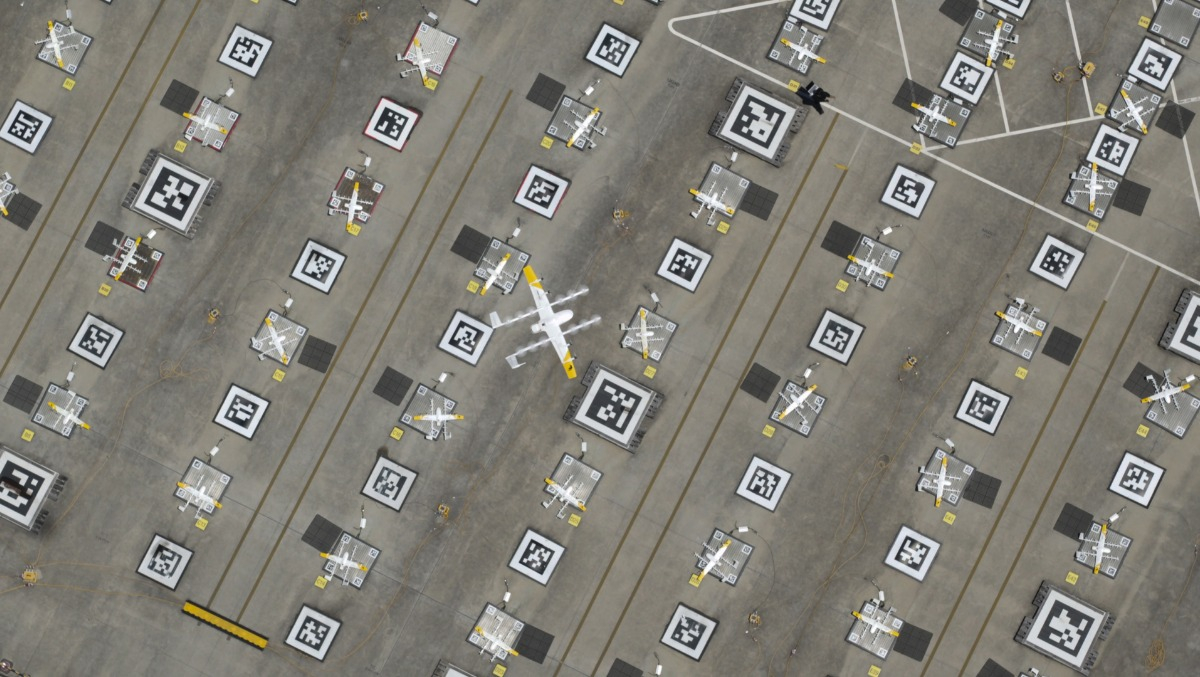
Google Wing delivery drones will overhaul how its devices pick up packages by removing the need for a store employee to wait for the aircraft to arrive.
The business said the change, along with other improvements to its charging processes, could allow its drones to shift to delivering millions of parcels a year.
Wing launched commercially in 2019 in Australia and currently allows for the delivery of packages weighing less than 1.5 kilograms from various shops that sell household and perishable goods, including coffees and sandwiches.
In its latest update, Wing said it’s now looking to shift its model so that the drones can deliver, travel, and charge throughout the day in whatever pattern is most efficient without needing to return to a central point of origin to power up its batteries.
According to Wing CEO Adam Woodworth, the network has three main hardware elements: the drones themselves, pads allowing them to land and recharge between jobs, and “Autoloader” machines that speed up the pickup process.
“Our Autoloader allows our delivery drones to perform what has become a tremendously popular service – curbside pickup – on the consumer’s behalf, with no additional work (arguably even less) for store employees,” said Woodworth
“The Autoloader includes a spot where store employees can latch packages without waiting for the drone to arrive. Once the system confirms a package has been dropped off, a drone is dispatched to pick it up and then deliver it to the customer. There is no power or data connection required.”
Woodworth added the ultimate aim is to deliver millions of packages at scale as part of an efficient, safe automated logistics system.
Multiple charging points add flexibility, and last-mile delivery can be made a simple process – a business will just need to order a drone, turn it on and let it connect.
“Up to this point, the industry has been fixated on drones themselves — designing, testing, and iterating on aircraft, rather than finding the best way to harness an entire fleet for efficient delivery,” said Woodworth.
“Wing’s approach to delivery is different. We see drone delivery at scale looking more like an efficient data network than a traditional transportation system.
“As with many other areas of technology, from data centres to smartphones, the physical hardware is only as useful as the software and logistics networks that make it meaningful for organisations and their customers.
“By the middle of 2024, we expect our system to handle tens of millions of deliveries for millions of consumers at a lower cost per delivery than ground transportation can achieve for the fast delivery of small packages.”
Wing started life in 2012 as one of the first projects at the tech giant’s super-secretive research lab, Google X, alongside its augmented reality eyeglasses and self-driving cars.
It launched its first trials in 2018 before starting more commercial flights the following year in both Canberra and Logan.
Once a customer submits an order via the app, the drone flies to pick up the package at the designated delivery centre before climbing to a cruise height of 45 metres and flying to the destination.
Once there, it hovers and lowers the package to the ground, automatically unclipping the parcel without assistance from the customer.
The business, technically a subsidiary of Google’s parent company Alphabet, now conducts more deliveries in Australia than in any other country and has previously dubbed Logan the “drone delivery capital of the world”.
It initially operated from stores located within Google’s distribution centre but then shifted to picking up packages from the roof of shopping malls and then supermarket car parks.












